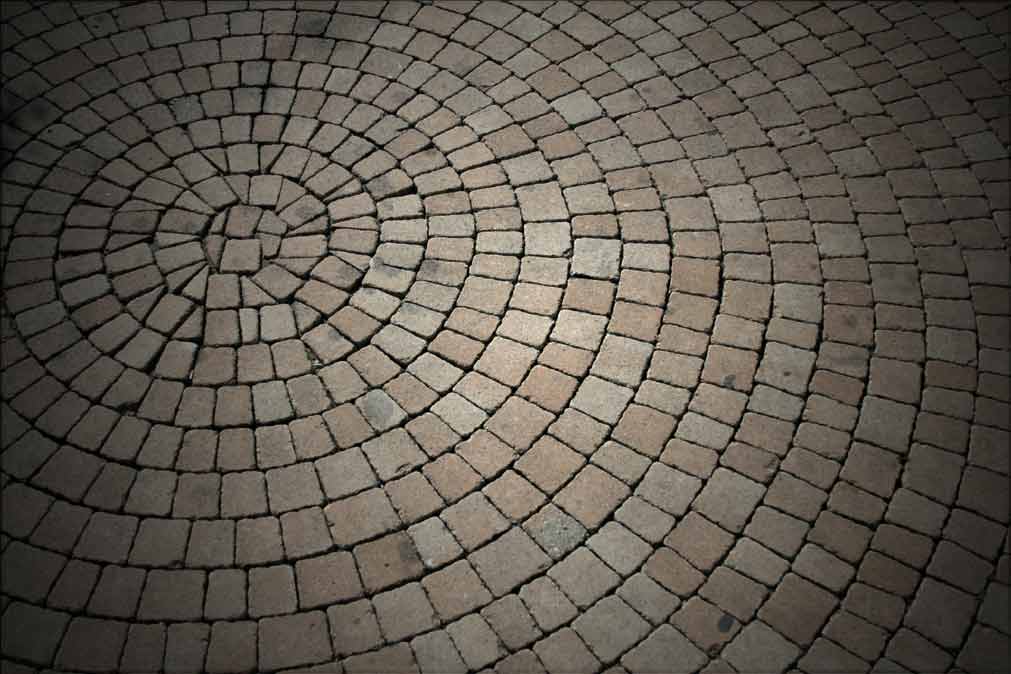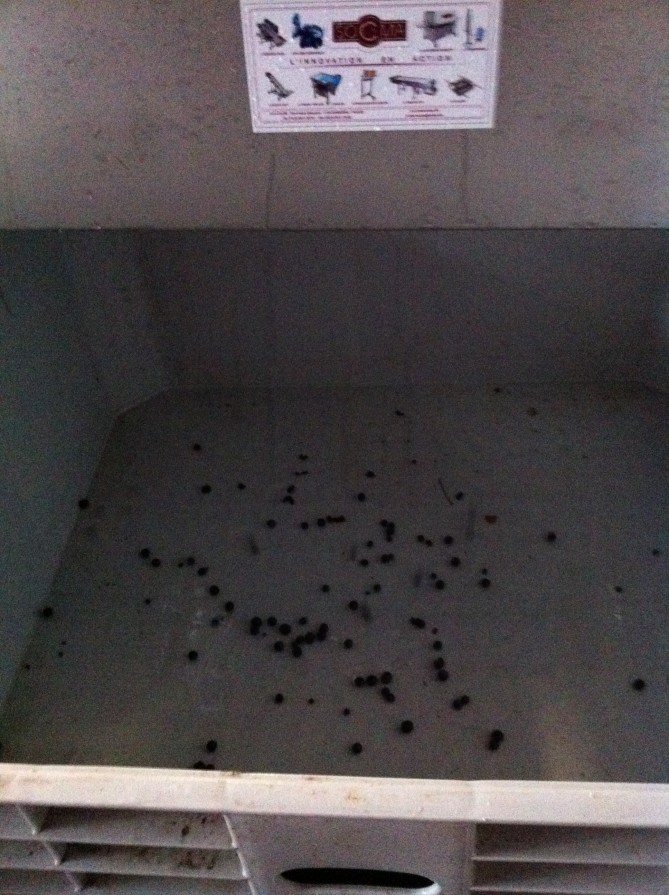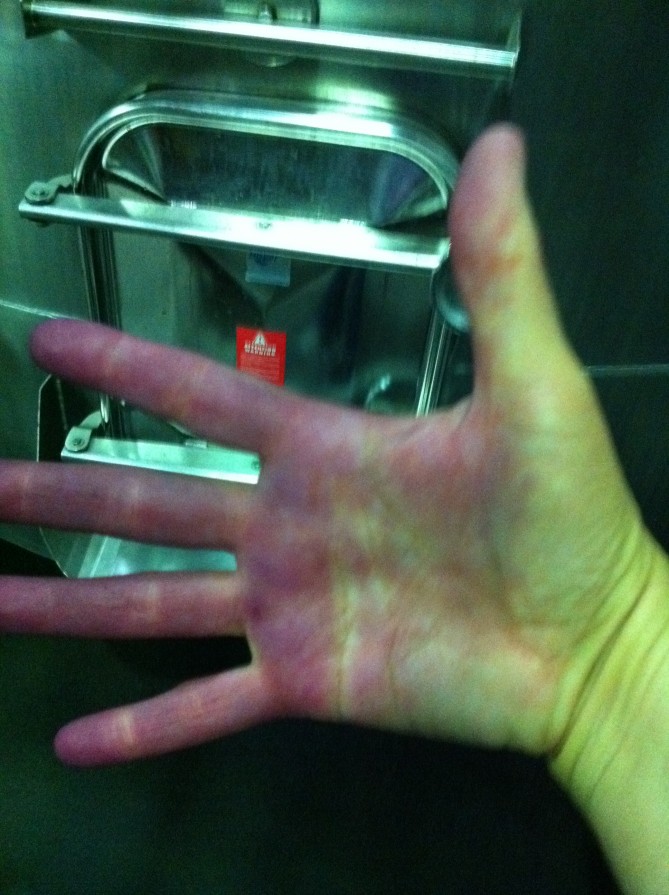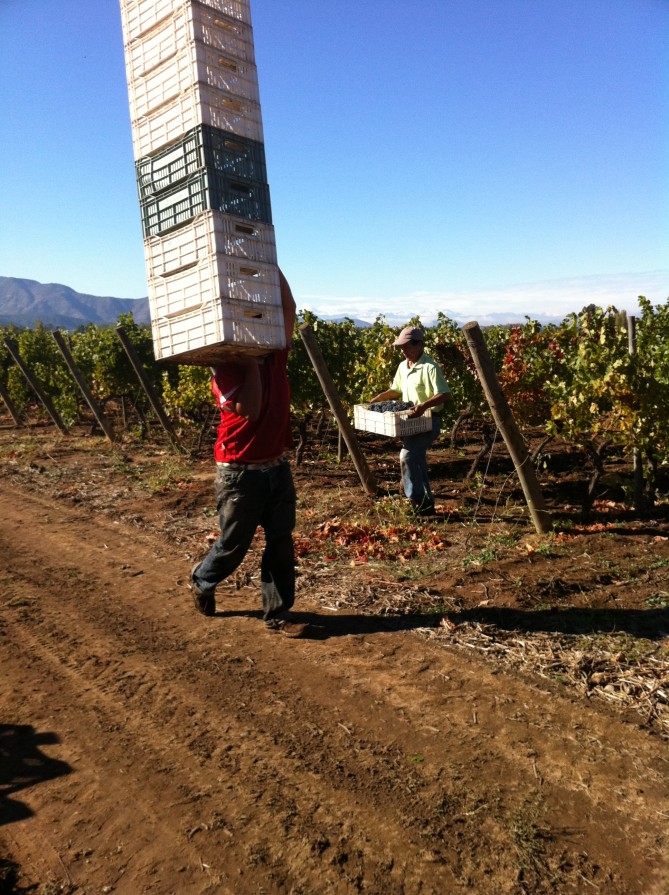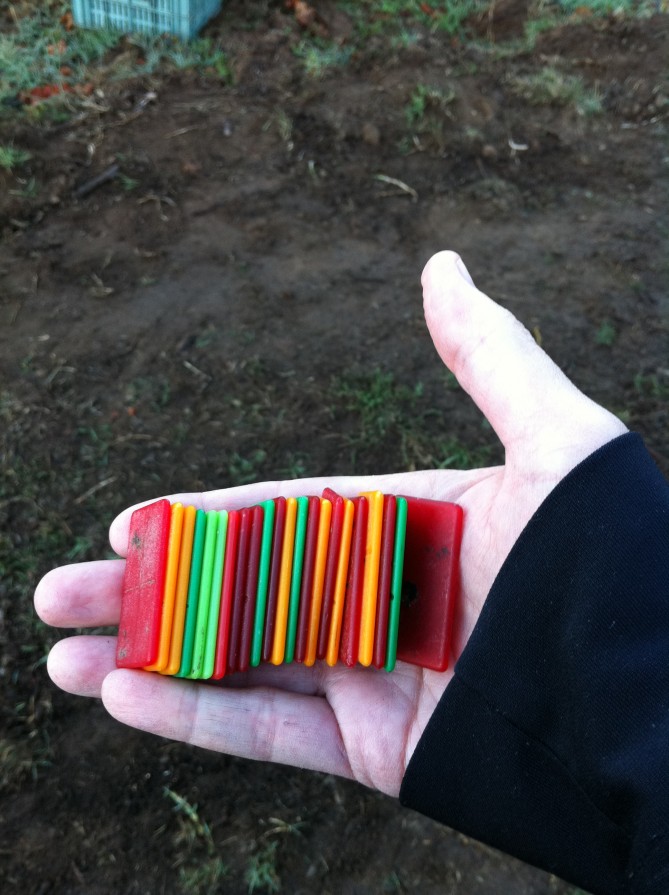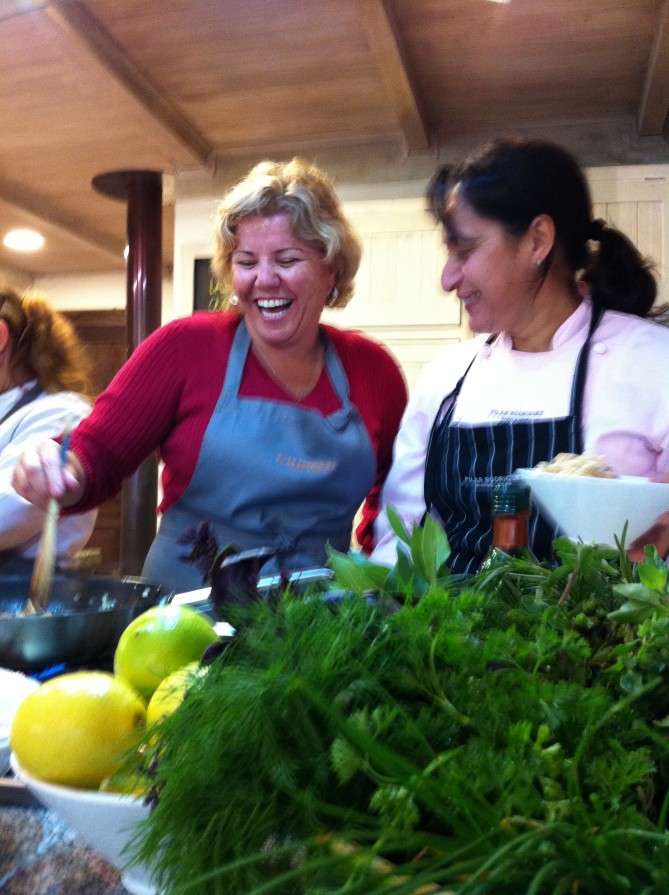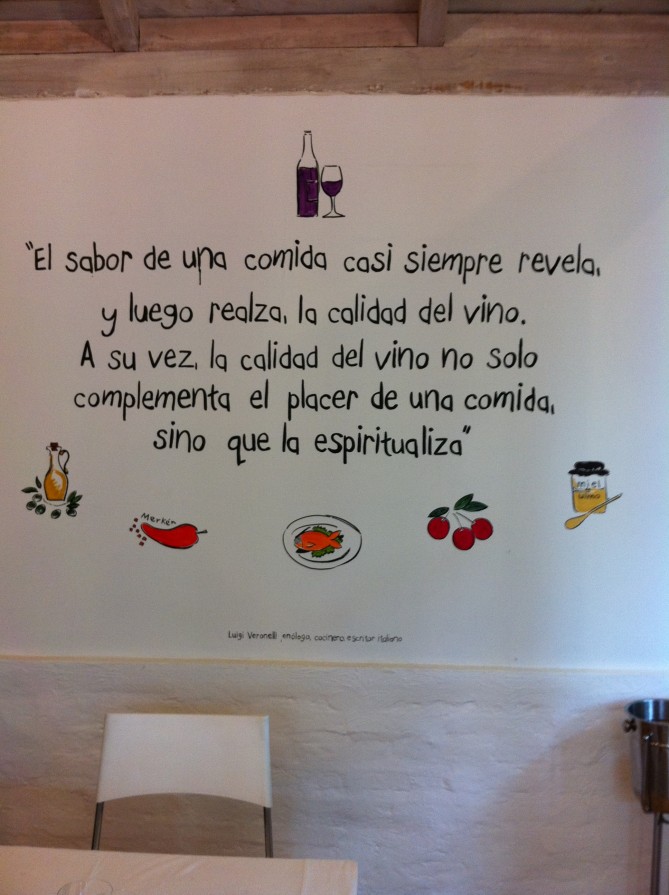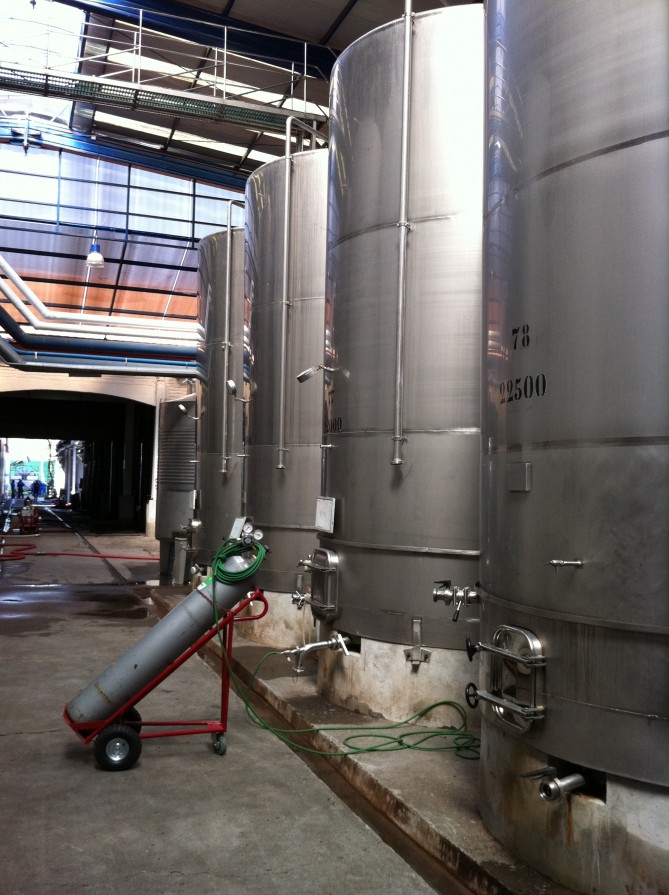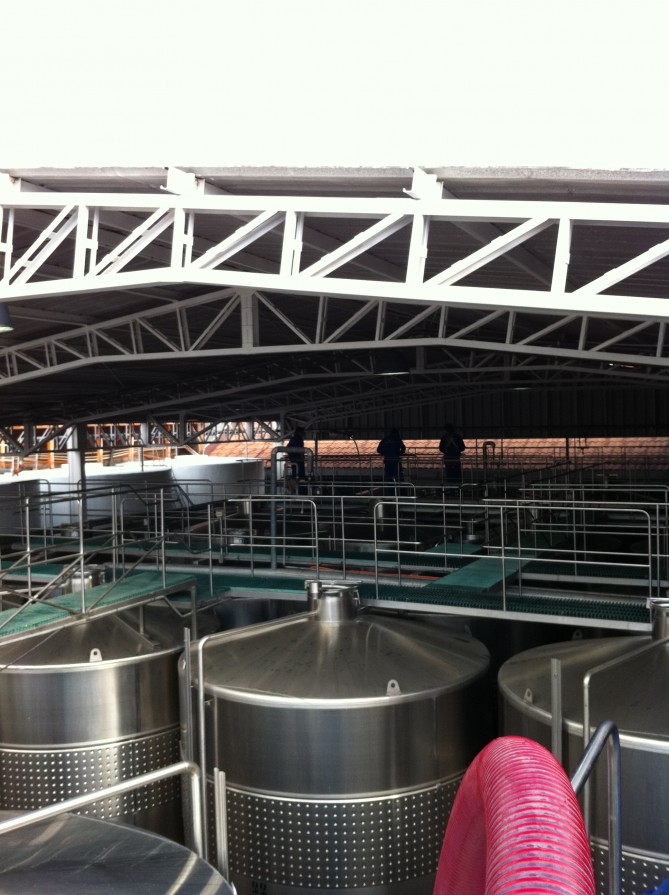5.6.2011
Hand destemming, sorting of the Clos Apalta grapes
Posted in News
by Tammi Ramsey
Good Morning!
Sorry I missed posting this yesterday, I had my new synthetic ear drum put in my left ear and today I feel like Lindsay Wagner (well, not quite, still no sound or hearing happening, but I will keep you posted when it happens. After 6 years of silence in my left ear, I am about 3-6 months from hearing again).
Back to Chile and the Clos Apalta vineyards of Lapostolle wines. So I worked in the vineyards during picking and I said the grapes were picked then picked up on a flat bed tractor by really young high energy men. These guys would drive the tractors in between the blocks and pick up the full bins of freshly picked grapes then as quickly and carefully as possible load, stack and then head to the winery at the top of the hill. After each bin is full it probably weighs between 35-40 pounds, these guys are lifting 3-4 bins over and over and once the truck is full they have to strap the entire load on and off they go. The drive can take 10 minutes of 30 depending on how far they are from the winery. But when they get to the top there is a process of unloading and stacking that is fast accurate and really kinda fun to watch.
This is where I started my next part of the apprenticeship. When the grapes arrive you are in an area they call the reception area. Every morning between 60-80 women are there and ready to hand destem these grapes. These are the highest quality grapes and the winemaker chooses to manually sort all the grapes and hand pick each off the bunch. This might be the most back breaking work I have ever done. You grab a bin of grapes and take them to a large table you will share with 8 others. Then you get a smaller plastic box/bin and the grapes you will ultimately choose goes into that box.
So at first I thought this should be easy, but after asking some questions I found this work to be fascinating. I ask why only women do this job, I was told women were much more selective and they wanted no shriveled grapes, no under ripe grapes, no raisins and no leaves and no stem whatsoever in the final grapes going into the barrels. Women are better at doing this work and they are far more gentle. SO they gave me a pair of gloves and started me at a table. All the women around me had their heads down and would speak every so often but they spoke no english. I did learn from them when I was doing things right they would say “Claro”. That means sure or right….when I was doing something wrong they would grab the grapes and make me watch them and show me that I was leaving in too small of grapes or little bits of leaves. They were perfectionists and we both taught each other a few words in English and Spanish.
After 20 minutes of standing there, my back and legs were screaming already. I am used to moving around all the time so standing on the concrete was really eye opening. Also, my hands were freezing, the grapes are still chilly from the night coolness and I felt like I wanted to stand in place and jump up and down to keep my legs from locking up but my middle section was sweating because you work at such a fast pace. After my little box was full, I then took it over to the processing machine. Most women can sort 20-25 boxes a day alone. You know I love machines so this was interesting to me. The processing machine is a huge vibrating conveyor belt (I will work on this machine later in the afternoon), but what it does is it shakes all the grapes into one layer and you can visually check out the grapes and sort and pull out the ones that should not have made it. Moving very fast, the 3-4 people watching and sorting are lightening quick. I had the chance to work this part of the machine most of the next day, it is really insane how focused you need to be to catch such small flaws before the grapes get to the next phase of the machine.
All the while there were these guys who worked in the receiving area who did nothing but collect all the stems and unused grapes and took them away for composting. they had to load up these massive wagons and take the soon to be composted material down the hill by tractor to the composting area.
The grapes shoot into the blast chiller, they don’t freeze them just keep them cold and this equipment line is about 40-50 yards long. When the grapes are cold and sorted they go into either 55 gallon new oak barrels or they go into these large stainless steel containers that will transport them to the massive barrels that hold maybe 2000 gallons. All work at Lapostolle is done in a gravity environment. Each process moves the grapes lower and lower until it is 4 stories below in the 2 year cellar. I will go more into that as my jobs in the winery progress.
What happens once the grapes get into the barrels? The barrel macersation starts, meaning that the weight of the top grapes ruptures the lower grapes and they start to ferment (the yeast turns the sugars of the grapes into alcohol). There are very labor intensive jobs all through this process and I will discuss that next week. I still have at least another week worth of blogging to describe my apprenticeship before I can really start doing the tasting notes, so if you are waiting for tasting notes and such. I am getting closer to all those wonderful tastings I did at the 18 wineries I hit while in Chile!
Have a great weekend!
Much LOVE and wine!
Tammi
